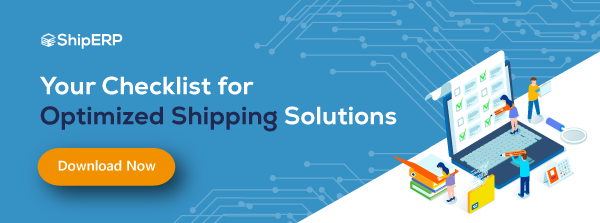
Why Shippers Should Care About Amazon Prime Day 2022
Amazon Prime Day generated $10.4 billion in 2021, earning the title of the biggest sale of the year. It started in 2015 to celebrate Amazon’s 20th anniversary, giving sitewide discounts to Prime Account Members. Since then, Amazon Prime Day simultaneously has shaped the e-commerce landscape and created hurdles for supply chain professionals.
What is Amazon Prime Day?
For consumers, Amazon Prime Day is the biggest online shopping event of the summer. This year, it takes place over two days, July 12 and July 13. For new customers, Amazon Prime comes with a 30-day free trial, allowing you to enjoy the benefits of Amazon Prime Day 2022 without paying membership fees.
Why should you care about Amazon Prime Day?
Amazon Prime Day is the single largest sales event in the e-commerce industry. This event presents both opportunities and challenges for supply chain professionals and consumers.
Prior to the advent of Amazon’s summer holiday, Black Friday and Cyber Monday marked the unofficial start of the festive holiday season. Now, peak season is ramping up as early as June.
Matching Inventory with Demand
Amazon reported $3.5 billion in third-party sellers’ Prime Day sales. However, while many manufacturers are stocked and ready for demand surges, knowing which products to stock at each distribution center can be a logistical nightmare. The trick for sellers is matching inventory with demand. For Amazon, predictive analytics and anticipatory shipping have the process down to a science. Real-time warehousing visibility and supplier communication will be paramount to supply chain success for third-party sellers.

Last-mile delivery
Customers expect the arrival of their Prime Day deliveries within 24 hours (or sooner). Amazon’s predictive analytics and vast network of distribution centers make this possible, enabling the e-commerce behemoth to execute 24-hour deliveries consistently and successfully across several countries. With products strategically placed across distribution centers and inventory optimization algorithms hard at work, the next great challenge falls on the shoulders of parcel and less-than-truckload carriers.
Rate Hikes
Speaking of last-mile delivery, with Amazon requiring the support of many carriers, freight forwarders, and other 3PLs, rate hikes are all but inevitable. Carrier scarcity, causing rate increases and shipment delays, is projected to strain the entire industry. The ability to efficiently rate shop a wide selection of integrated carriers may make or break some enterprises.
Overcoming Logistical Challenges
ShipERP equips small businesses and enterprises alike with the tools necessary to come out on top in the face of supply chain adversity. Companies like YETI Coolers, Maui Jim, Callaway Golf, and Gulfstream Aerospace trust our solutions to meet customer demand and exceed expectations.
Prepare for success this Amazon Prime Day with one of our tailored solutions:
- ShipERP Core – Reduce labor, save costs, and automate shipment processing for your SAP-enabled business.
- ShipERP Cloud – Manage rate shopping, multi-carrier shipping, parcel tracking, and export documentation—all in one space—with a true platform-agnostic, cloud-native multi-carrier solution.
- SupplierPORTAL – Standardize your supplier communication and enable greater collaboration between trading partners to gain better visibility and control over your freight costs.
- CarrierPORTAL – Connect with shipping carriers in real-time to receive carrier delivery statuses and customer e-signatures with the easy-to-use SAP web portal.


